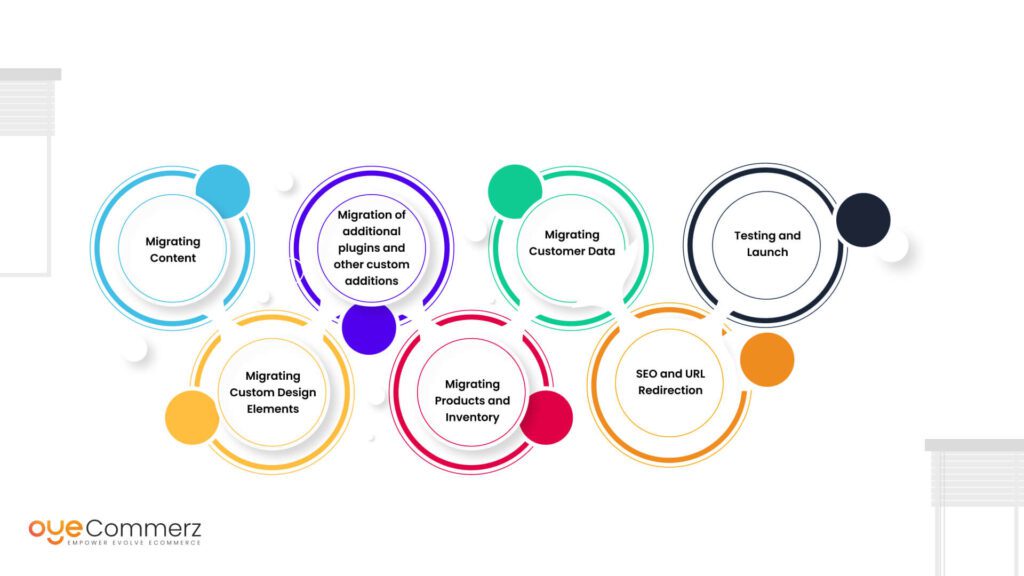Effortless Transition from WP to Shopify: Your Definitive Guide to E-commerce Success
Shifting from WordPress to Shopify is an promising step toward streamlining your e-commerce processes. As companies grow, choosing a platform that aligns with growth potential, UX, and flexibility is essential. Shopify has emerged as a favorite for online merchants, offering unmatched adaptability, security, and ease of use. In this guide, we will delve into the transformative impact of this migration, discuss the benefits, and provide actionable steps to ensure a smooth transition.
1. Why Migrate from WordPress to Shopify?
WordPress, paired with WooCommerce, continues to support countless e-commerce platforms. However, as companies scale, issues like plugin dependency, data risks, and complex setups can hinder progress. Shopify, specifically created for e-commerce, addresses these concerns with an all-in-one, intuitive platform. Statistics supports this shift—Shopify powers over 4.4 million websites globally, with a reported 10% boost to sales conversion rates for numerous merchants after migration.
2. Shopify's Advantages for Thriving Online Stores
Shopify’s powerful platform caters for scaling brands. Its standout benefits are:
- Seamless Customization: Shopify provides over 80 expertly crafted themes.
- Integrated Tools: Capabilities such as Shopify Payments and integrated SEO save time and effort.
- International Expansion: Multi-currency support and localization features empower brands to reach global markets.
Additionally, Shopify delivers an availability percentage of 99.98%, guaranteeing your website is always operational.
3. Getting Ready for Your WP-to-Shopify Transition
Prior to starting the migration process, assess your current store. Review inventory details, client information, and SEO performance. Tools like Shopify’s Migration Kit or external tools can simplify this process. Develop a detailed strategy, making sure all assets—product descriptions, media files, and blog content—are ready for seamless import.
4. The Importance of Accurate Data Migration
Data migration forms the foundation for a smooth platform switch. When migrating from WordPress to Shopify, focus on:
- Inventory Details: SKU, item summaries, and categories.
- Client Information: Emails, order history, and preferences.
- Search Engine Considerations: Preserve meta tags, URLs, and forwarding paths to maintain search rankings.
Use apps like LitExtension to facilitate seamless migration while reducing mistakes.
5. Customizing Your Shopify Store
Post-migration, customizing your Shopify store helps it reflects your business identity. Utilize Shopify’s drag-and-drop editor to design pages effortlessly. Shopify's themes are mobile-responsive, providing a smooth user experience across devices—a critical factor, given 74% of e-commerce traffic comes from mobile visitors.
6. Maintaining SEO During Migration
SEO is vital for preserving your online presence during migration. Shopify excels in SEO with clean URL structures, built-in optimization tools, and seamless blog integration. Make sure you:
- Implement 301 Shopify post-migration support redirects for existing links.
- Enhance updated content with keyword-rich content.
- Use Shopify's apps Plug in SEO to track analytics post-migration.
7. Post-Migration Testing
Once the migration is complete, run detailed checks.
Review: - Page load times (Shopify boasts faster speeds in contrast with WP).
- Payment integration reliability and transaction flow.
- Mobile responsiveness.
Testing ensures your store delivers a seamless shopping experience from the start.
8. Case Study of a Successful Migration
An example of effective platform switching is Gymshark, a sportswear company that moved to Shopify. Post-migration, the company experienced a 60% increase in mobile sales and reduced site downtime. Product data migration This highlights the potential of Shopify in enhancing online business success.
9. Overcoming Common Migration Issues
Migration is not without obstacles, such as information accuracy and adjusting tailored features. However, Shopify’s extensive assistance and external professionals make overcoming these hurdles manageable. Partnering with experienced Shopify developers helps guarantee a trouble-free transition.
10. Making the Switch: The First Step Toward Success
Switching from WordPress to Shopify marks a forward-thinking approach to e-commerce. By addressing scalability, streamlining operations, and improving buyer satisfaction, Shopify enables companies to thrive in challenging industries.
Conclusion
Switching from WP to Shopify offers a smart solution that can greatly enhance your e-commerce success. With a well-structured strategy, the appropriate resources, and professional guidance, you can unlock new growth opportunities.
Ready to make the leap? Let’s discuss how our Shopify migration services can transform your e-commerce platform. Contact us now, or ask yourself: Can your business afford to miss out on Shopify’s growth potential?
